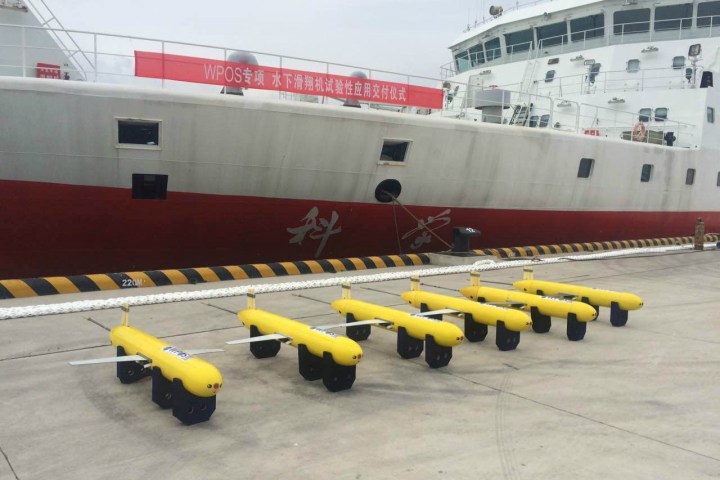
These so-called glider drones, known as “Haiya” — meaning “sea wings” in Mandarin — are more durable and more energy efficient than previous iterations. Most importantly, these latest drones are capable of instantly relaying underwater data to the military — a technological achievement the US has yet to accomplish. China claims it has successfully released 12 of these state-of-the-art drones into the farthest reaches of the South China Sea — to allegedly collect environmental data.
During tests in March of this year, the gliders reportedly dove to a depth of nearly 21,000 feet (almost four miles), shattering the previous world record dive of 16,964 feet held by the US. In 2014, utilizing a new battery and special pressure-resistant coating, a underwater drone controlled by the Chinese broke a world record by traveling 635 miles without stopping over the course of 30 days.
The deployment of these submarine drones is just the latest move in China’s ongoing effort to control the South China Sea. The Chinese military has built artificial islands in the region, complete with communications systems and potentially even missile launchers. In 2016, the Chinese even captured a US underwater drone in international waters. Covering a total area of nearly 1,500,000 square miles, the South China Sea is the largest sea in the Western Pacific region. As such, if an all-out war were to break out in the area, there’s a huge amount of territory to cover. And with a maximum depth of 16,457 feet along the China Sea Basin, any subsurface advantage could be decisive for militaries involved.
As noted previously, these unmanned drone tests were considered environmental missions, and the Haiya were not carrying weapons at the time. However, these gliders could be easily be used to detect, monitor, and potentially even “catch” US underwater assets (namely submarines) in the South China Sea. Stay tuned for all of the latest, “environmental testing” in the Pacific powder keg.


